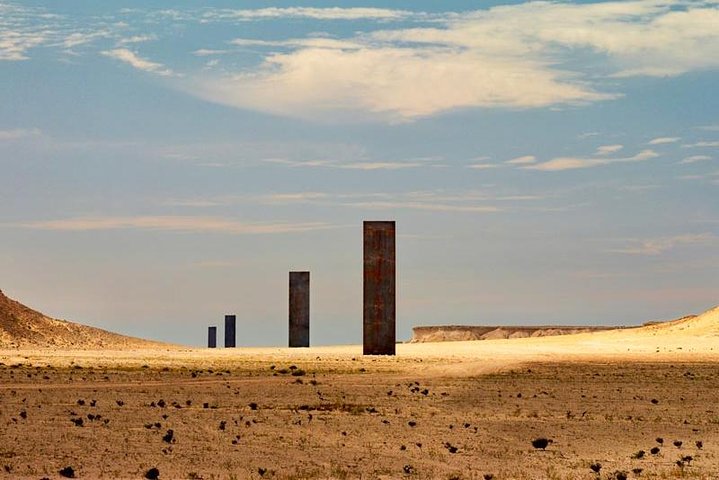When travelers think of Qatar, the image that often comes to mind is of gleaming skyscrapers, modern museums, and luxury shopping centers in Doha. Yet, beyond the capital city lies a side of Qatar that connects deeply to its roots—the west coast, where the desert meets the sea and history lingers in ancient villages, forts, and archaeological sites.
Exploring the Historical sites in West Coast Qatar gives travelers a glimpse into the country’s cultural heritage, long before oil transformed it into a modern hub. From abandoned fishing villages to reconstructed forts and landmarks tied to Qatar’s pearling history, the west coast offers a fascinating journey through time.
Why Explore Historical Sites on the West Coast?
The west coast of Qatar is special for several reasons:
It was once a center for fishing and pearling communities.
The area preserves ruins of old villages and forts that tell stories of resilience.
Several sites are tied to Qatar’s pre-oil economy, offering insight into daily life in past centuries.
Its location combines desert landscapes and coastal scenery, making it both culturally and visually rewarding.
Top Historical Sites in West Coast Qatar
1. Film City (Zakreet Fort)
Perhaps the most famous attraction on the west coast is Film City, also called Zakreet Fort. Though not a historic settlement in itself—it was built as a set for a television production—it is modeled after a traditional Qatari village. With its stone houses, watchtowers, mosque, and courtyard, the fort gives visitors an immersive look at how villages in Qatar may have looked centuries ago.
Film City has become a symbol of Qatar’s effort to preserve and showcase its cultural roots, making it an essential stop for history enthusiasts and photographers.
2. Abandoned Villages of West Qatar
Scattered across the west coast are abandoned fishing and pearling villages, silent reminders of Qatar’s past. These villages were once bustling with activity, as families relied on the sea for survival.
One of the most notable examples is Al Jumail Village (near the northern side but often linked with west coast tours). With its crumbling stone houses, narrow paths, and remains of a mosque, it offers a haunting yet fascinating look into the lives of early Qataris.
3. Umm Bab Settlement
Near Umm Bab Beach, visitors can find traces of small historic settlements. While today Umm Bab is more famous as a picnic and beach destination, its surrounding area preserves hints of old fishing life. The presence of palm trees and wells once made it a gathering place for desert dwellers.
4. Archaeological Traces in Zakreet
The Zakreet Desert itself is dotted with archaeological sites that reveal evidence of human settlement. Excavations have uncovered pottery, tools, and remnants of structures that show people lived and traded in the area centuries ago. This adds another layer of intrigue to Zakreet, already famous for its mushroom-shaped rock formations and Richard Serra’s modern sculpture.
5. Al Zubarah Fort (Nearby but Essential)
Though technically closer to the north coast, many west coast tours include Al Zubarah Fort, a UNESCO World Heritage Site. Built in 1938, it is one of Qatar’s best-preserved forts and tells the story of the country’s pearling history and trade connections. Exhibitions inside display artifacts and stories from the 18th-century town of Al Zubarah, once a thriving trading hub.
Cultural Significance of West Coast Sites
The west coast is a living reminder of Qatar’s transformation. These sites highlight the challenges faced by early communities, from surviving in arid deserts to relying on fishing and pearling for survival.
Visiting these areas not only brings history to life but also fosters an appreciation of how Qatar balanced tradition with modernization. For locals, these places are symbols of identity and heritage, while for travelers, they provide an authentic cultural experience.
Activities for History Lovers on the West Coast
A historical sightseeing trip to the west coast can include:
Exploring reconstructed villages at Film City.
Walking through abandoned settlements, imagining the life of early residents.
Learning about Qatar’s pearling heritage through guides and exhibits.
Photography tours to capture ruins, forts, and desert landscapes.
Combining history with nature, as many of these sites sit within scenic desert and coastal areas.
Best Time to Explore West Coast Historical Sites
The ideal time to visit these sites is from November to April, when the weather is cooler and more comfortable for walking outdoors. Summers can be extremely hot, making early mornings or late afternoons the best times for exploration.
Travel Tips for Visiting West Coast Historical Sites
Take a guided tour: Local guides share stories that bring ruins and forts to life.
Wear light, modest clothing: Respect cultural norms and stay cool in the desert heat.
Carry water and snacks: Facilities are limited in remote areas.
Bring sturdy shoes: Useful for walking through rocky terrain and ruins.
Plan your stops: Some sites are spread out, so a guided package ensures you don’t miss key locations.
Why Book a Guided West Coast Tour?
While you can self-drive to these locations, joining a guided west coast tour enriches the experience. Guides not only ensure safe desert travel but also share valuable context about the villages, forts, and archaeological sites. They connect the ruins to Qatar’s broader history, making the trip far more meaningful.
Conclusion
Exploring the historical sites in West Coast Qatar is like stepping back in time. From the reconstructed Film City to abandoned pearling villages and archaeological remains, these destinations reveal the resilience and traditions of early Qataris.
For travelers looking beyond Doha’s modern attractions, the west coast offers a rare opportunity to connect with Qatar’s heritage while enjoying stunning desert and coastal landscapes. Whether you are a history enthusiast, a cultural explorer, or a curious traveler, a tour of West Coast Qatar’s historical sites will leave you inspired and enriched.
So, when planning your journey, don’t miss the chance to explore these remarkable locations—where history, culture, and nature come together in one unforgettable adventure.



